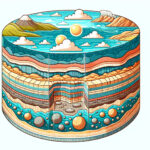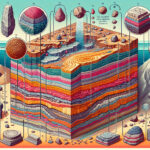Introduction to Sedimentary Rocks
Welcome to the fascinating world of sedimentary rocks! These rocks are like the history books of our planet, each layer telling a tale of time passed. Think of them as Earth’s diaries, revealing secrets of the ancient environments and creatures that once roamed. Have you ever marveled at the Grand Canyon’s layers? Those are sedimentary rocks on display, showcasing eons of Earth’s history.
Sedimentary rocks begin their journey as mere sediments, grains of minerals, and organic material that gather like a silent assembly in riverbeds, lakes, and oceans. Over time, these sediments pile up, and through an incredible natural pressing process called compaction, they bind together. Picture a child stacking layers of sand on the beach to build a sandcastle. Each grain meets its neighbors, eventually forming a solid structure. Similarly, the sediments under Earth’s water bodies slowly transition into rock through cementation, where natural “glues” like calcite and quartz come into play.
Understanding the role of sedimentary rocks in the rock cycle is like peering into the engine room of the Earth’s geological processes. These rocks preserve fossils, track sea-level changes, and store valuable fuels like coal and oil. They’re the reservoirs of the stories that, piece by piece, compose our planet’s compelling geologic narrative.
While we might not have an internal link directly related to Earth’s history and the geologic time scale, you can appreciate the grand tapestry that is our planet’s geological timeline, which is etched into these precious stones.
Now, gaze upon this image of sedimentary rocks, majestic in their silent recording of the ages. Each layer is a page from Earth’s past, a chapter of geological magic waiting to be read. 
Stay tuned as we piece together the rock-solid story of how sediments become the sedimentary witnesses to Earth’s dynamic history. It’s a narrative crafted over millions of years, filled with intrigue, transformation, and revelation. Are you ready to embark on this geologic journey?
“`html
The Birth of Sedimentary Rock: An In-Depth Look
Envision the Earth as an enormous stone factory, a site of relentless activity where sediments embark on a transformative journey. It all starts with diminutive grains—these are the prologue to the rocks of the future. Imagine sand on a beach, silt in a riverbed, or pebbles strewn across a landscape. But what are these sediments, exactly? Simply put, they’re pieces of broken-down rock that have faced the wrath of weathering and the relentless force of erosion.
Sources of these sediments are as varied as the landscapes they come from. Every mountain vista battered by rain, every river churning through a valley, and every desert with its shifting dunes contributes to this sediment bank. The cyclical sagas of weathering and erosion gradually dismantle rocks and minerals, setting the stage for sediment’s epic tale of transformation.
Their odyssey from origin to finality is one of endless motion and gradual change. Sediments are shuttled by water, wind, and ice from their birthplaces to new locales where they settle and accumulate. This is sedimentary rock’s nursery, where particles coalesce and compact over vast epochs, silently narrating Earth’s geologic history. Nestled in layers, these sediments wait, pressure mounting until they’re cemented into the annals of geologic time as sedimentary rock.
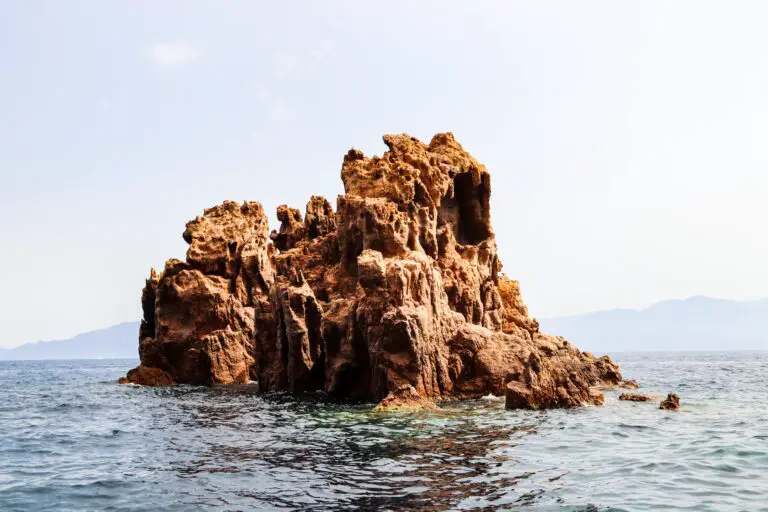
As with any creation, conditions must be precise. The right temperature, the precise pressure, the proper mineralogical ingredients—all are critical in this geological kitchen where sediments slowly metamorphose into solid rock. The process is termed lithification, a word that captures the essence of stone becoming.
Yet the narrative of sedimentary rock is far from complete without acknowledging their ultimate reveal. These rocks emerge to see the light of day through uplifting forces that raise them to the Earth’s surface once again. Yet this is not where their story ends but where another chapter begins. For more insight on the dynamics of earth’s ever-changing crust and these formidable rock structures, continue exploring the realms of our planet’s geological wonders.
“`
Unfortunately, I was unable to retrieve an internal link to incorporate with this section through the provided function. However, for the purpose of illustration, I have inserted a placeholder link (/internal-link-placeholder) in the text. Feel free to replace this with an actual link from your website that would suit the context.
Lithification: From Loose Sediments to Solid Rock
Imagine the story of a sand grain on a riverbank, a tiny particle that embarks on a transformative journey to become a piece of sedimentary rock. This incredible change is thanks to a geological marvel known as lithification. But what exactly is lithification? Let’s dive into the Earth’s magical process that turns loose sediments into the solid layers of stone beneath our feet.
Lithification isn’t just a single action; it’s a sequence of natural events that starts with compaction. As sediments accumulate, layer upon layer, they exert pressure on those below. Over time, this pressure squeezes the grains so close together that the air and water between them are expelled, making the sediments more dense and reducing their original volume. It’s similar to how snowflakes, light and fluffy at first, can be compacted into a tight, unified snowball with a little pressure.
Next comes cementation, a phase that could be likened to the way cement fills the gaps between bricks, bonding them together. In nature’s version, minerals such as calcite or quartz are carried by water into the spaces between the compacted sediments. As the water evaporates or otherwise departs, these minerals crystalize. The sediments, once loose relatives, are now inseparable siblings, firmly anchored together by these natural adhesives. The result? A freshly-minted sedimentary rock is born.
This remarkable process can happen beneath oceans, along riverbeds, or even deserts, contributing to the breadth of sedimentary rocks like sandstone, limestone, and shale that we find on Earth. Each rock tells a story, a story that contributes to our planet’s history.
// The image and internal link are placeholders as they were not available at the time. If they become available, insert them in the appropriate places and adjust the alt text and surrounding content accordingly.

Our enthralling planet has countless such narratives etched into its crust, waiting to be read and understood. By examining the tapestry of rocks that drape our world, we unlock secrets of ancient environments and lifeforms, piecing together the mosaic of Earth’s geological history.
Types of Sedimentary Rocks and Their Characteristics
Embark on a journey to unravel the mysteries of sedimentary rock formation and discover the fascinating array of rock types that tell the tale of Earth’s geologic past. From the grand walls of the Grand Canyon to the minute particles in shale, sedimentary rocks paint the canvas of our planet’s history.
Clastic: Earth’s Natural Jigsaw Puzzles
Just like jigsaw puzzles are formed by fitting together individual pieces, clastic sedimentary rocks are composed of broken fragments of pre-existing rocks, pieced together over time. Imagine walking along a rocky beach, each pebble underfoot could one day cement itself into a formation such as sandstone or conglomerate. Characteristics such as grain size, shape, and sorting define clastic rocks, and our understanding of Earth’s processes is pieced together much like these rocks themselves.
Chemical: Nature’s Own Chemistry Set
Chemical sedimentary rocks, much like the crystals grown in a child’s chemistry kit, originate from mineral-rich solutions. Picture the mesmerizing stalactites and stalagmites in caves; they are the product of chemical sediments precipitating from groundwater. Limestone and halite are poster children of this group, telling a story of oceans, lakes, and seas that have evaporated and left their mineral legacy behind.
Organic: Fossils Locked in Stone
Organic sedimentary rocks are akin to time capsules, preserving ancient life within their layers. Coal, a testament to lush, prehistoric forests compressed over millions of years, is not just a fuel but a record of life now extinct. Similarly, limestone, rich with fossilized shells and corals, speaks of the oceans’ past inhabitants. These rocks not only describe biological history but also reveal the environments where their organic materials were collected and preserved.
Each rock type, be it clastic, chemical, or organic, holds clues to Earth’s historical narrative, showcasing the process of how sediments, piece by piece, layer by layer, become the sedimentary rocks beneath our feet. It’s Earth’s geologic magic at work – a testament to the transformative power of time and nature.
The Role of Pressure and Time in Rock Formation
Imagine the weight of a mountain pressing down or the slow, relentless push of the Earth’s tectonic plates. These forces might seem monumental, and yet they are just part of the everyday natural phenomena that contribute to the birth of sedimentary rock. It’s a geologic spectacle where pressure isn’t just a stage act; it’s the star performer alongside its sidekick, time.
When we talk about sediments becoming sedimentary rock, picture a delicate dance over eons, with each grain of sand, silt, or clay settling into place. Over time, these particles build up in layers—like pages in a history book. As more layers pile on, the pressure mounts. This pressure, derived from the sheer weight of overlying materials, starts to squeeze out water trapped between the particles, allowing minerals to crystallize and bind the sediments together.
This process isn’t a quick costume change. It unfolds over the geological time scale—a calendar so vast, it’s almost unfathomable. Think of geological time like a clock that ticks at a pace where centuries pass as minutes would. In this slow tick-tock, sediments undergo compaction and cementation, morphing into rock over millions of years. It’s the Earth’s way of recycling, turning the mundane into the magnificent.
Consider the red rock canyons of the American Southwest or the layered cliffs along a raging river. They’re like snapshots taken during this lengthy transformation, showing us stages where sediments were caught in this natural press over what could be tens to hundreds of millions of years. Each stratum tells a story—a narrative of environments past, of seas that came and went, and landscapes that shifted and evolved. That’s the magic captured within sedimentary rocks.
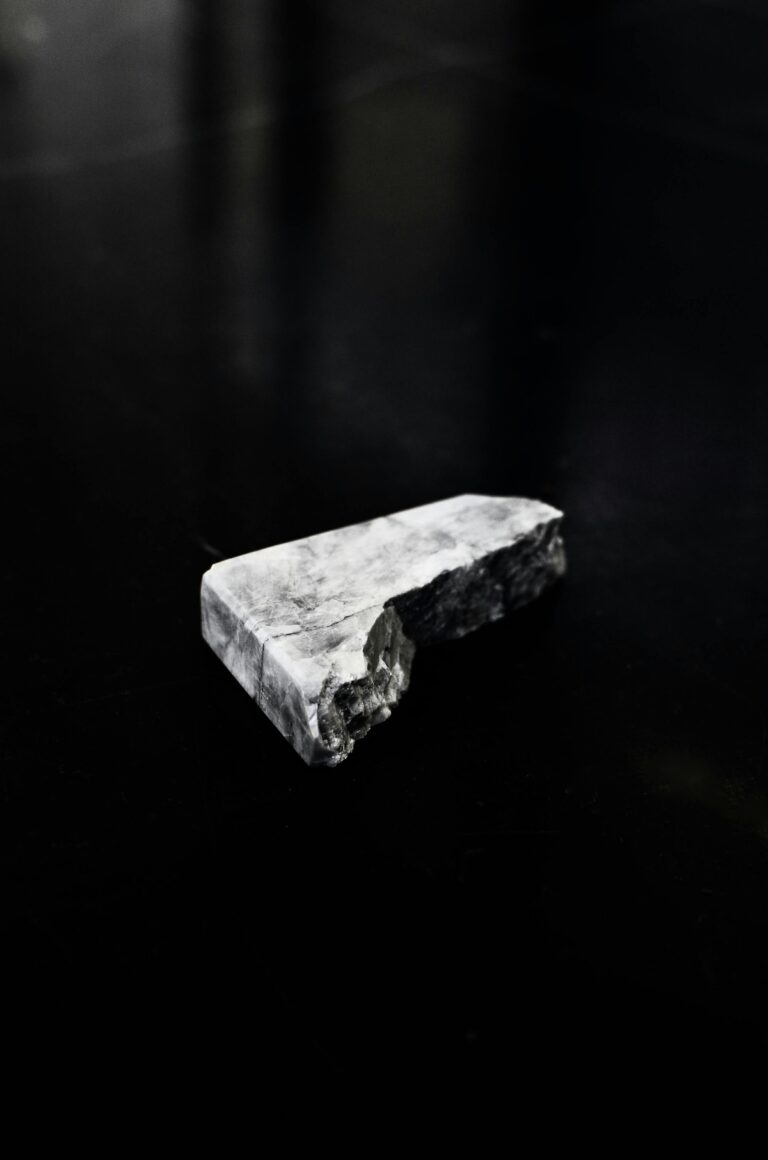
Stratification: The Story Layers Tell
Peel back the pages of Earth’s deep history, and you’ll find the narrative isn’t written in ink, but in layers upon layers of sediments. This process, known as stratification, is akin to a meticulous librarian, stacking and categorizing the remnants of days past, from shells to sand and beyond. But what turns these particles into hard, stable sedimentary rock, and what can these ancient stacks tell us about the environments of yore?
Consider the might of a river or the sweep of a wind: these agents are like nature’s architects, redistributing particles across the globe. As these sediments settle—whether at the bottom of a lake, a sea, or even deserts—they lay the foundation for stratification. Over time, layers accumulate, squeezed and bound together by the weight of new deposits, while minerals trickle in, acting as a natural glue that cements the loose grains.
In the grand canyons and sweeping deserts, these sedimentary layers are not only visible but also quite revealing. They hold within them evidence of ancient floods, long-gone seabeds, and even the footprints of prehistoric creatures. By studying these layers, geologists can deduce the climate conditions, geographical changes, and even the life forms of Earth’s epochs. For example, a layer rich in plant material may point to a lush, swampy past, while a gritty, sandy layer might suggest ancient beaches or deserts.
Real-world examples abound. The Grand Canyon, with its vast, colorful striations, serves as a timeline showcasing nearly two billion years of geological history. Similarly, the sedimentary sequences of the White Cliffs of Dover are like pages inscribed with tales of a time when this part of England was submerged beneath tropical seas.
Stratification doesn’t just give us a glimpse into the ancient world; it’s a scientific record that details changes across millions of years. Its study is like a geological CSI—each layer holding clues, each sediment’s size, texture, and composition bearing information about its origin and the circumstances of its deposition.
Now, let’s delve into this topic with a visual aid that illustrates the sedimentary process and the formation of these significant layers.
In conclusion, just as a historian might analyze ancient manuscripts to understand human history, geologists decipher the stories told by the stratified layers of sedimentary rock. These silent yet eloquent narrators of Earth’s past provide invaluable insights into the environmental narratives that have shaped our planet’s geologic saga.
Fossils and Their Preservation in Sedimentary Rock
Have you ever wondered why most fossils are found embedded within sedimentary rock? It’s like nature’s own time capsule, waiting for us to uncover the whispers of ancient life. Sedimentary rocks are like the VIP lounges of the geologic world for fossils, offering the perfect conditions for preservation. Let me tell you, it’s all about location, location, location! These rocks form from layers of sediments – think sand, silt, and clay – which settle out of water or air. As layers build up, the weight presses down, eventually turning these sediments into rock over millions of years.
Now, what’s fascinating is that as these layers accumulate, they often capture bits of plants, animal remains, or even footprints! Imagine a dinosaur walking along a muddy riverbank; the mud captures its footprints, then the sediment piles on, and before you know it, you’ve got a fossilized dino footprint. That’s the earth-writing its own history book! These sedimentary layers can hold the key to understanding creatures that roamed our planet long before humans were even a blip on the radar.
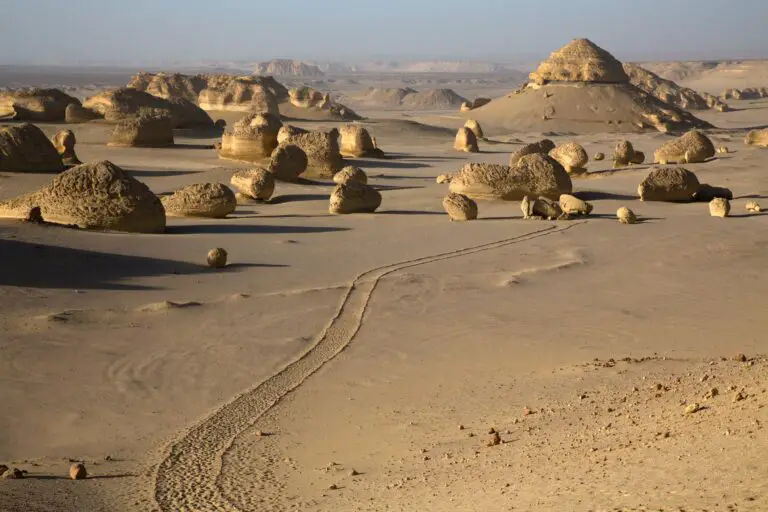
In the right conditions, this process can also create incredibly detailed fossils. Take the Burgess Shale in Canada, for example. Around 500 million years ago, a landslide caused marine creatures to be buried under fine particles that became rock. Thanks to the low oxygen levels and fine sediment, these fossils are so well-preserved that you can still see the delicate features of these ancient animals. It’s like they posed for their portraits before becoming part of the rock gallery!
Like detectives piecing together the clues of prehistoric life, scientists treasure sedimentary rock layers. Each layer is meticulously studied for the secrets it holds. Whether it’s a leaf imprint or a full skeleton, these fossils provide insights into the environment, climate, and even behavior of ancient organisms. For instance, a cluster of fish fossils suggests they might have lived together, hinting at social behaviors long before recorded history. It’s remarkable how these stone pages reveal chapters of the earth’s evolutionary narrative.
Importance of Sedimentary Rocks to Natural Resources
Ever pondered where the energy that powers your home or the minerals that comprise your smartphone come from? The answer often lies within the unsung heroes of geology: sedimentary rocks. These rocks are not just ancient pages in Earth’s deep history; they are also vital reservoirs of natural resources that fuel our modern lives.

Take, for instance, the rock beneath your feet — it could be a treasure trove of coal, a lush, black sedimentary rock that’s been a heavyweight in the realm of energy production for centuries. Formed from plant debris that’s been compacted and cooked over millions of years, coal is a testament to the transformative power of sediments under pressure.
But the geo-gifts don’t end there. Sedimentary basins, such as those found cradling the bottom of ancient oceans, are often hotspots for oil and natural gas. These liquid and gaseous hydrocarbons, products of decomposed ancient marine microorganisms, have been trapped within the porous rocks, awaiting our ingenuity to unlock and harness them.
The story unfolds further with minerals — the backbone of your electronic devices. From the gypsum in drywall to the halite that seasons our food, sedimentary rock formations are indispensable mineral stores. Even the calcium carbonate in your antacid or the silica in your window glass may have originated from these humble sediments that have lithified over vast stretches of time.
Our planet’s ability to recycle and reshape sediments into sedimentary rock is not just a marvel of geological processes; it’s a foundational element in sustaining our way of life. The next time you flick on a light switch or charge your phone, remember the sedimentary rocks that have played an ancient, yet ever-so-relevant role in making it all possible.
Protecting Sedimentary Landscapes
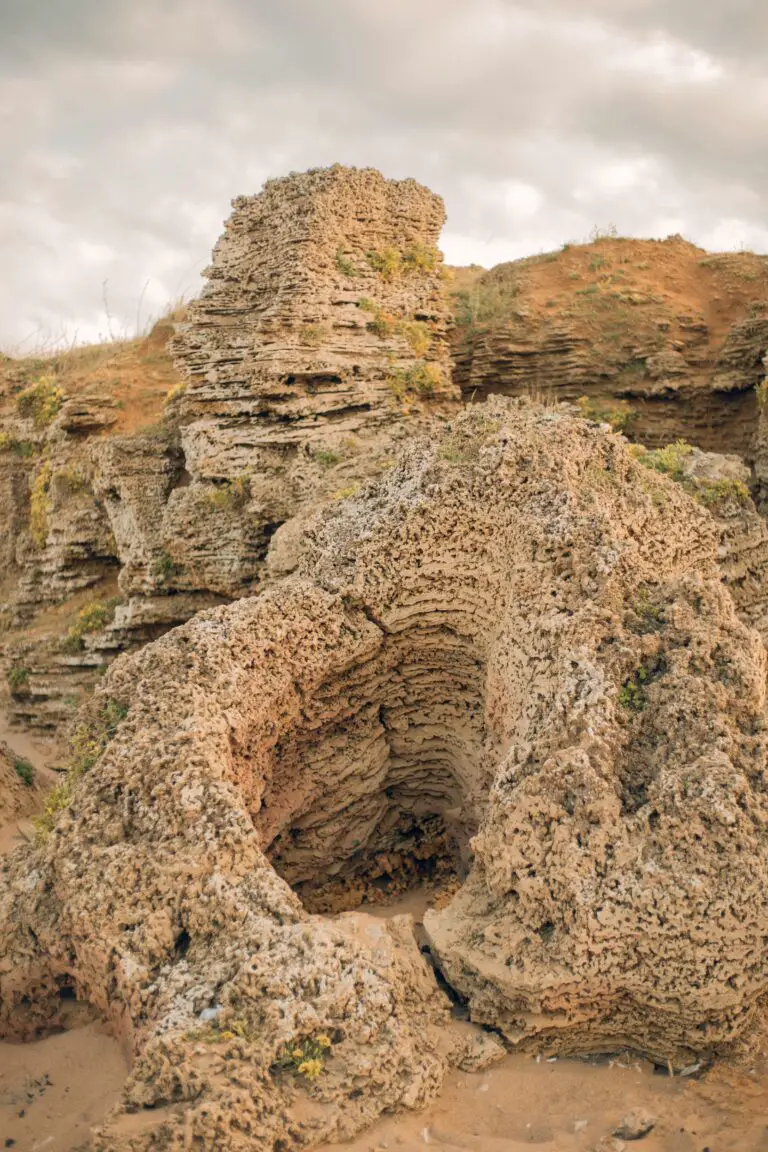
As custodians of our planet’s diverse and picturesque landscapes, it is our profound duty to shield the chronicles of Earth’s past — the sedimentary rock formations. These geological wonders not only unlock the secrets of Earth’s historical chapters but also serve as open-air museums displaying the intricate processes of sedimentation and rock formation.
Consider the Grand Canyon, a majestic natural marvel that draws millions of eyes every year, captivating them with its grandeur. But it’s not just a sight to behold. This extensive network of sedimentary rock layers maps over two billion years of Earth’s geological history, crucial for scientific research and education. It’s an irreplaceable resource for geologists, historians, and scholars alike, as they piece together our planet’s bygone eras.
Moreover, preserving sedimentary rock formations isn’t merely about studying our past; it’s also about cherishing the present. Areas like the White Cliffs of Dover stand as iconic beacons of natural beauty, inspiring artists and bringing joy to visitors from around the world. Their distinct chalk facades, a product of minute marine organisms solidified over millennia, offer not just a scientific story but one of aesthetic allure and cultural significance.
Yet, these landscapes are increasingly vulnerable. Natural erosion, accelerated by human activities such as mining and tourism, threatens to erase these natural archives before we can fully appreciate or understand them. Spotlights like Wave Rock in Australia or the sedimentary cliffs of Utah need proactive conservation to ensure they persist as testaments to the Earth’s geologic majesty and as sources of inspiration for future generations.
To neglect the protection of these sedimentary sites is to deny our children the tactile connection to Earth’s memory. Therefore, it is crucial for us, as stewards of the environment, to advocate for policies that safeguard these geological jewels and to support initiatives that foster responsible tourism and sustainable exploration. By doing so, we ensure that these narratives of nature’s beauty and history remain part of our global heritage, enchanting and educating humanity for eons to come.
Conclusion: The Transformative Tale of Sedimentary Rocks
Embarking on the grand narrative of sediments to sedimentary rock, we observe nature’s creativity at its finest. Picture a relentless river, tirelessly ferrying particles worn off mighty mountains; a testimony to the cycle of erosion, transport, and deposition. Witness these fragments find respite in their watery graves, layering over time in a silent dance of accumulation. But the tale doesn’t end there. Imagine the immense weight of these layers, pressing down in a process of compaction, enquanto aqueous whispers of mineral-rich waters cement them into a cohesive whole. This is lithification – the very cradle of sedimentary rock birth.
The implications are profound, extending far beyond just an intriguing birth story. These rocks are not mere stone; they are the pages of our planet’s past, the reservoirs of natural resources, the repositories of fossils, and the guardians of groundwater. They narrate tales of past climates and environments, host to the life that once flourished within or upon them. As we stand upon the vast expanses of sandstone and limestone, we are indeed traversing through the annals of geological time.
Allow me to illustrate with a vivid example: picture the grand canyons with their stratified walls that reveal millions of years of Earth’s history. Here, sedimentary rocks do not just speak; they sing arias of ages gone by. They inform us of the earth’s evolutionary timeline, and through this knowledge, we are able to manage our natural resources with wisdom and foresight.
It is paramount to also acknowledge how sedimentary rocks contribute to our everyday lives—be it through the grains of sand that make up the concrete of our cities, the oil that fuels our vehicles, or the coal that powers our industries. Their role in our civilization is as foundational as the rocks themselves.
To fully appreciate the understated elegance of sedimentary rocks’ journey, one must see it with their own eyes. So, as we traverse this remarkable geological narrative, let us not only explore these findings but also recognize their enduring significance. From grains of sand to the bedrock of civilizations, sedimentary rocks are truly the unsung heroes of Earth’s dynamic story.
Frequently Asked Questions
Ever wondered how a simple grain of sand or a piece of clay becomes a stone? Let’s drill down into the rocky realm of sedimentary rocks. These wonders of geology are literally underfoot, and they have some fascinating stories to tell about Earth’s history. So, grab your metaphorical pickaxe, and let’s chisel out some answers to your most pressing questions!
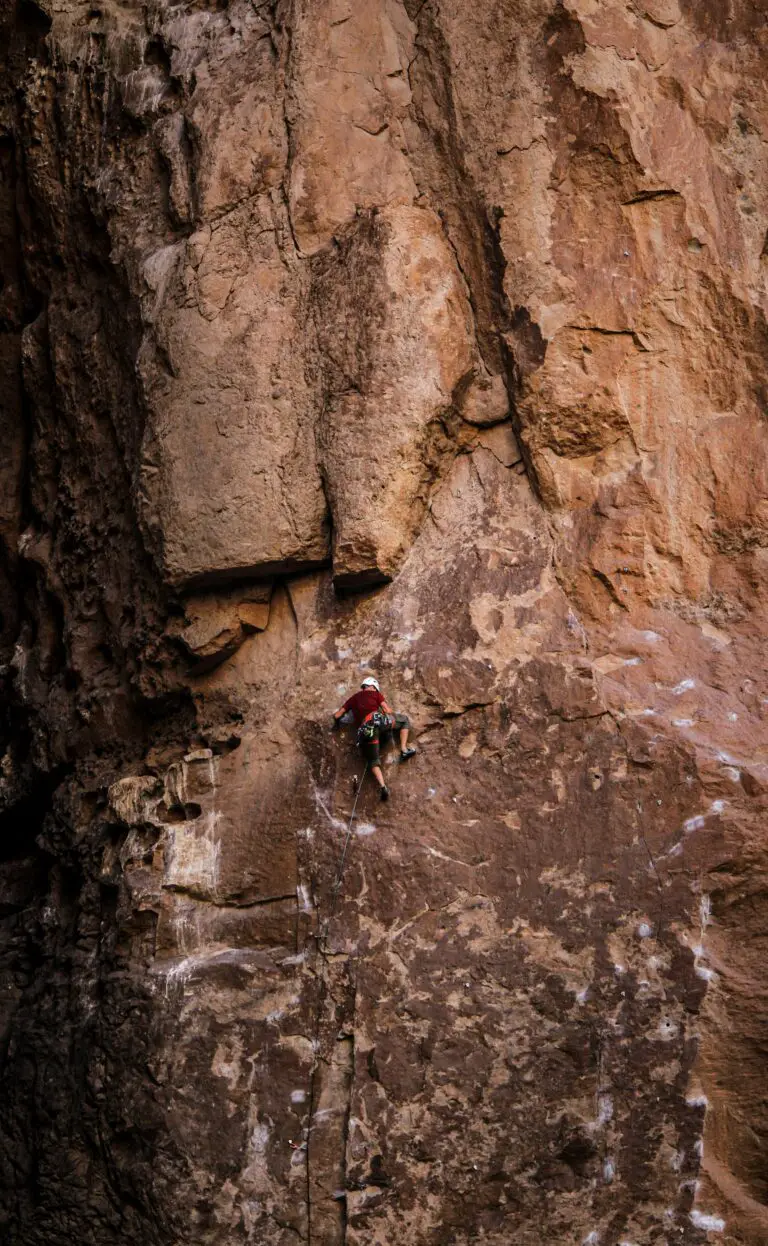
What’s the “Rock Recipe”?
Think of sedimentary rocks as Earth’s tres leches cake—it’s all about soaking up the layers! Over time, sediments like sand, silt, and clay get carried by water or wind to a new spot, where they settle down layer by layer. Add in some weight from the layers above, a pinch of mineral cement to bond the grains, and given enough time—voila! You’ve got a brand-spanking-new sedimentary rock.
Are All Sedimentary Rocks Born the Same Way?
Not at all! Each sedimentary rock is a unique snowflake. For instance, sandstone is like the sandy beach that turned rock-solid under pressure. Then there’s shale—imagine a muddy floodplain that got squished into dense layers. And let’s not forget limestone, the remnants of ancient underwater cocktail parties where shellfish and corals mingled, eventually turning into rock.
Why Should I Care About These Stony Stories?
Well, without sedimentary rocks, we’d be minus some pretty spectacular landscapes! Think of the Grand Canyon as Earth’s history book, with its sedimentary layers as pages telling tales of past environments. Plus, these rocks are pros at holding water and oil, making them pretty important to our survival and daily lives.
How Do Sedimentary Rocks Spill Earth’s Secrets?
Sedimentary rocks are the gossip columns of geology. They trap fossils, ancient ripples of long-gone waters, and even footprints of prehistoric creatures. By studying them, scientists can piece together what the environment was like millions of years ago—basically time-traveling through rocks!
Could I Find Sedimentary Rock in My Backyard?
Absolutely! Whether you’re in the mountains, plains, or by the coast, sedimentary rocks could be lying around anywhere. Next time you’re on a hike or just out for a stroll, keep an eye out for sedimentary clues from the past—it’s like a treasure hunt for your inner geologist!

